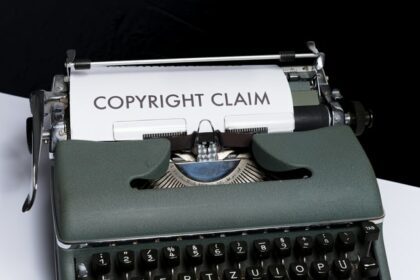
Case Summary Written by Khethiwe Mabhena, Candidate Attorney, checked and released by Elani Vogel, Candidate Attorney
13 April 2022
Judgment Delivered on 29 January 2021
THE BACKGROUND
This judgment concerned an application before the Supreme Court of Appeal (the “Court”) to set aside an order of the High Court dismissing SWATCH AG (SWATCH SA)’s (the “applicant”) application to deny Apple Inc. (the “respondent”) a trademark registration in class 14 on the basis that Apple Inc.’s trade mark is similar to theirs and would therefore be confusingly similar and negatively affect the applicant’s brand and business.
The applicant is the proprietor of the trademark “SWATCH” with registration no. 1986/04168 in class 14. Class 14 of the Nice classification includes precious metals and their alloys and goods in precious metals or coated therewith, not included in other classes; jewelry, precious stones; horological and chronometric instruments.
The respondent is an international company which applied to register its “IWATCH” trade mark in classes 9 and 14.
The applicant opposed the respondent’s trademark application by relying on section 10 of the Trade Marks Acts 194 of 1933 (the “Act”) as it contended that the registration of respondent’s “IWATCH” mark in class 14 was likely to deceive or cause confusion as regards the applicant’s “SWATCH” mark.
The matter was brought before the Registrar of Trade Marks who transferred the proceedings to the High Court in terms of section 59(2) of the Act. Section 59(2) of the Act permits the registrar to refer any application to court at any stage of the proceedings.
The Court had to determine whether the marks of Apple and Swatch SA were deceptively or confusingly similar in terms of section 10(12), 10(14) and 10(17) of the Act and considered the factors set out in the Plascon Evans case.1
The Court investigated whether the marks have visual, aural and conceptual similarities. It was noted that the Court’s obligation is to compare the marks themselves and not allow itself to be influenced by external factors which relate to the brands, the popularity of the brands and the market share of the brands.
In the visual comparison of the marks, both marks make use of the common element “WATCH”. The marks also utilize a prefix before the watch, “I” for Apple and “S” for Swatch. The difference in the prefixes of each brand mark give rise to a clear visual differentiation.
In the aural comparison of the marks, the prefix of “I” adjoined to “WATCH” makes a word of two syllables when pronounced. This sounds differently from the monosyllabic word of “SWATCH”.
In the conceptual comparison of the marks, both of the marks reference the word “WATCH” which is a descriptive word. The purpose of trade marks or copyright is to protect distinguishable marks and not to enable a monopoly over common use words in the English language. As a result, there can be no significance attached to the use of the word watch as a conceptual identifier.
The applicant’s trademark was endorsed as follows: “Applicants admit that the registration of this trade mark shall not debar other persons from the bona fide descriptive use in the ordinary course of trade of the word “WATCH” “. Therefore, the applicant does not enjoy exclusive rights to the use of the word “WATCH”. Once the use of the word “WATCH” in both marks has been deprived of its conceptual significance, there is little conceptual similarity between the two marks.
The applicant emphasized in their founding affidavit that their watches are unique in terms of their engineering and marketing. The applicant’s marketing material proved that it was directed at a discerning fashion-conscious consumer. In the respondent’s description of their products, their answering affidavit left little doubt that the respondents’ products are innovative and are also targeted at a discerning, more affluent consumer who is less likely to be confused or deceived by the limited similarities between the applicant’s and respondents’ marks.
The Court held
That upon the comparison of the visual, aural and conceptual identifiers of both marks, there are no significant similarities detected which could make the marks confusing or deceptively similar.
The Court further held that even on the applicant’s best case, the identity of the goods in class 14 refencing watches and clocks, the marks of SWATCH and IWATCH are significantly distinctive taking into regard the likely consumers of the respective products; therefore, it is unlikely that the marks will give rise to any confusion and/ or deception. The appeal was dismissed with costs.
Value
A trade mark holder cannot enjoy and hold a monopoly over common descriptive English words. A trade mark application is to be determined over the mark and not the external influences which may be attached to the brand and its market share and/ or popularity.

